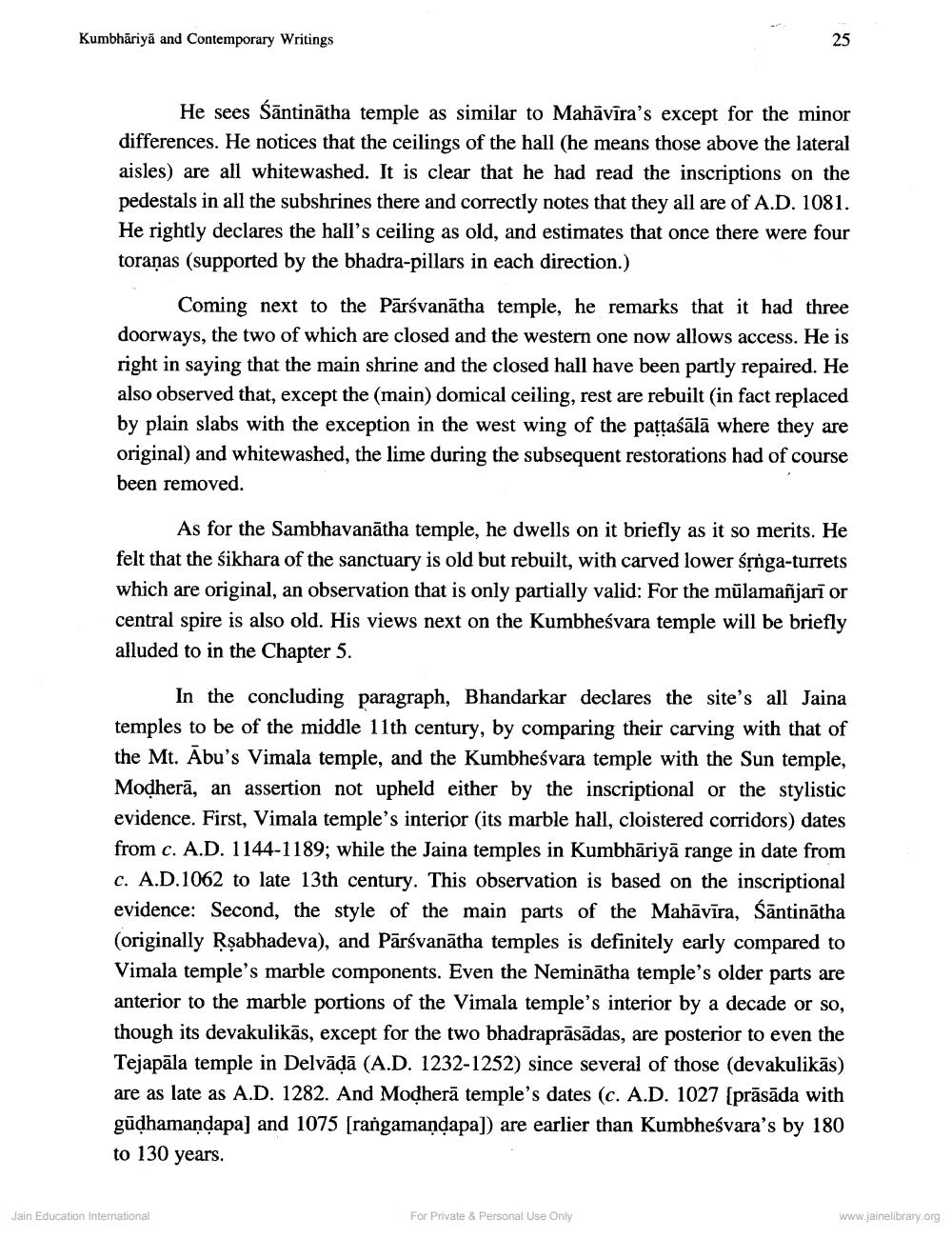________________
Kumbhariya and Contemporary Writings
He sees sāntinātha temple as similar to Mahāvīra's except for the minor differences. He notices that the ceilings of the hall (he means those above the lateral aisles) are all whitewashed. It is clear that he had read the inscriptions on the pedestals in all the subshrines there and correctly notes that they all are of A.D. 1081. He rightly declares the hall's ceiling as old, and estimates that once there were four toraņas (supported by the bhadra-pillars in each direction.)
Coming next to the Pārsvanātha temple, he remarks that it had three doorways, the two of which are closed and the western one now allows access. He is right in saying that the main shrine and the closed hall have been partly repaired. He also observed that, except the (main) domical ceiling, rest are rebuilt (in fact replaced by plain slabs with the exception in the west wing of the pattaśālā where they are original) and whitewashed, the lime during the subsequent restorations had of course been removed.
As for the Sambhavanātha temple, he dwells on it briefly as it so merits. He felt that the sikhara of the sanctuary is old but rebuilt, with carved lower śľnga-turrets which are original, an observation that is only partially valid: For the mūlamañjarī or central spire is also old. His views next on the Kumbheśvara temple will be briefly alluded to in the Chapter 5.
In the concluding paragraph, Bhandarkar declares the site's all Jaina temples to be of the middle 11th century, by comparing their carving with that of the Mt. Abu's Vimala temple, and the Kumbheśvara temple with the Sun temple, Modherā, an assertion not upheld either by the inscriptional or the stylistic evidence. First, Vimala temple's interior (its marble hall, cloistered corridors) dates from c. A.D. 1144-1189; while the Jaina temples in Kumbhāriyā range in date from C. A.D. 1062 to late 13th century. This observation is based on the inscriptional evidence: Second, the style of the main parts of the Mahāvīra, Santinātha (originally Rşabhadeva), and Pārsvanātha temples is definitely early compared to Vimala temple's marble components. Even the Neminātha temple's older parts are anterior to the marble portions of the Vimala temple's interior by a decade or so, though its devakulikās, except for the two bhadraprāsādas, are posterior to even the Tejapāla temple in Delvādā (A.D. 1232-1252) since several of those (devakulikās) are as late as A.D. 1282. And Modherā temple's dates (c. A.D. 1027 (prāsāda with gūdhamandapa] and 1075 [rangamandapa]) are earlier than Kumbheśvara's by 180 to 130 years.
Jain Education International
For Private & Personal Use Only
www.jainelibrary.org




